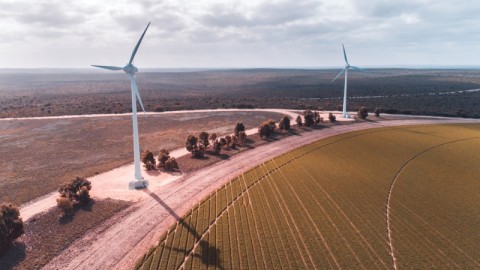Real Utilities, a stand-alone business under the Frasers Property Australia umbrella, has joined the Australian energy retail market.
Real Utilities owns and manages energy infrastructure within select Frasers Property developments and uses a combination of renewable energy, often generated through solar on the sites of its master planned communities, as well as certified carbon offsets, to provide carbon neutral energy to its customers.
This energy is distributed and sold by Real Utilities to the residents and businesses in the communities Frasers Property creates.
Real Utilities has committed to providing a cheaper electricity rate than the published discounted rates of the three biggest electricity retailers in the area, benchmarked twice a year.
As at July 2018, the price of energy provided by Real Utilities at its first residential site in Sydney was 28 per cent cheaper than the average standard tariff reported by the big three energy retailers, and below their published discounted rates.
Paolo Bevilacqua, General Manager Real Utilities at Frasers Property Australia, says Real Utilities represents the next frontier in holistic community development by providing energy to residents.
“Real Utilities gives us the capacity to provide a real cost-of-living benefit to our customers and create a more robust and holistic suite of infrastructure and services for the people who live in our communities,” Mr Bevilacqua said.
“The cost of energy is something our customers are concerned about. Real Utilities directly addresses this concern in a way that makes financial sense for our customers and commercial sense for Frasers Property.”
Residents in Frasers Property’s Tailor’s Walk community in Botany, Sydney, were the first to have electricity provided by Real Utilities. Today, Real Utilities has around 320 customers at Tailor’s Walk, with 100 per cent of residents having signed up to Real Utilities as their energy provider.
As new Frasers Property communities reach completion in coming years, such as Ed.Square in NSW, as well as Burwood Brickworks and Mambourin in Victoria, the number of Real Utilities customers is forecast to grow to approximately 7000 by 2025.
“For Frasers Property to progress Real Utilities to the point where it became established as a business in its own right, the model had to satisfy three key criteria. It had to show benefits to our customers, to our business, and in an environmental sustainability sense,” Mr Bevilacqua said.
“We were able to show benefits in these three key areas and demonstrate that Real Utilities can operate as a profitable commercial entity.”
Mr Bevilacqua said there were challenges, including the need for a greater understanding of energy markets and the regulatory environment, especially in the context of prevailing uncertainty in energy policy.
Real Utilities represents the next chapter in Frasers Property’s progressive approach to energy, following innovations including Central Park’s central thermal plant, Fairwater’s geothermal heating and cooling technology, and the large-scale solar PV installations that are a feature of its industrial business.
“Real Utilities leverages from a business standpoint the energy infrastructure we have been integrating in our developments anyway. We saw an opportunity to add value to our customers by taking on the role of energy provider to deliver cheaper and greener energy,” Mr Bevilacqua said.
Frasers Property recently became one of the founding signatories to the first global Net Zero Carbon Buildings Commitment, a World Green Building Council initiative. It means every new building created by the company must operate at net zero carbon from 2030, and all its existing buildings must operate at net zero carbon by 2050.
















